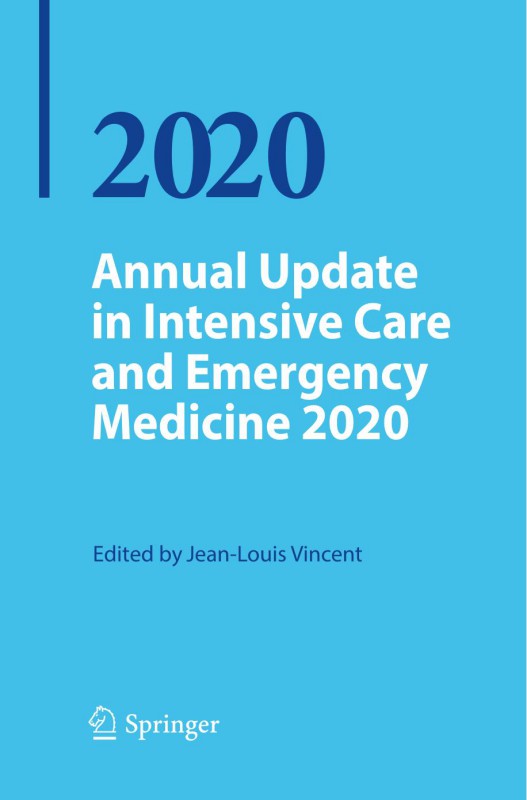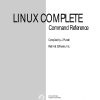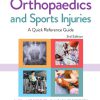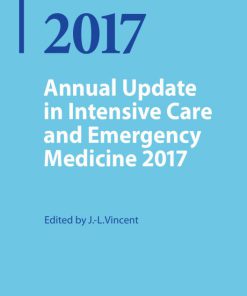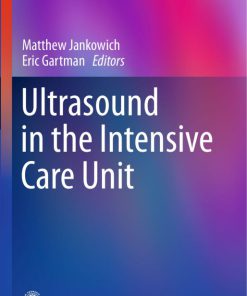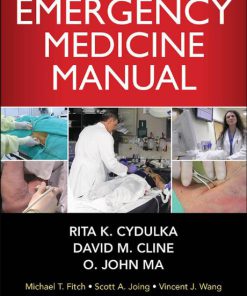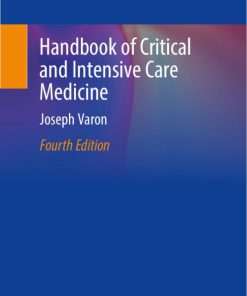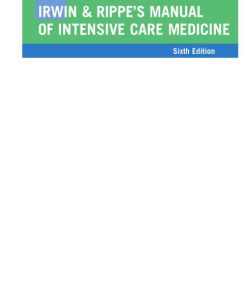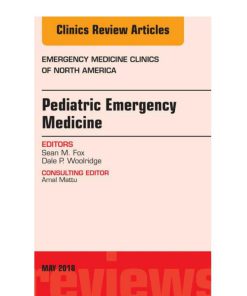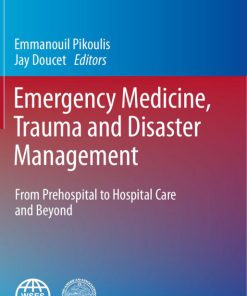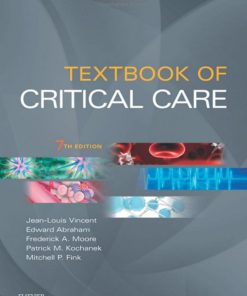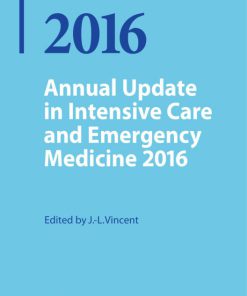Annual Update in Intensive Care and Emergency Medicine 2020 1st edition by Jean Louis Vincent ISBN 3030373223 978-3030373221
$50.00 Original price was: $50.00.$25.00Current price is: $25.00.
Authors:Jean-Louis Vincent , Series:Medicine [135] , Tags:Medical; Critical Care; Emergency Medicine; Internal Medicine; Clinical Medicine; (Annual Update in Intensive Care and Emergency Medicine) , Author sort:Vincent, Jean-Louis , Ids:9783030373238 , Languages:Languages:eng , Published:Published:Feb 2020 , Publisher:Springer Nature , Comments:Comments:The Annual Update compiles reviews of the most recent developments in experimental and clinical intensive care and emergency medicine research and practice in one comprehensive reference book. The chapters are written by well recognized experts in these fields. The book is addressed to everyone involved in internal medicine, anesthesia, surgery, pediatrics, intensive care and emergency medicine.
Annual Update in Intensive Care and Emergency Medicine 2020 1ST EDITION by Jean-Louis Vincent – Ebook PDF Instant Download/Delivery. 3030373223 978-3030373221
Full download Annual Update in Intensive Care and Emergency Medicine 2020 1ST EDITION after payment
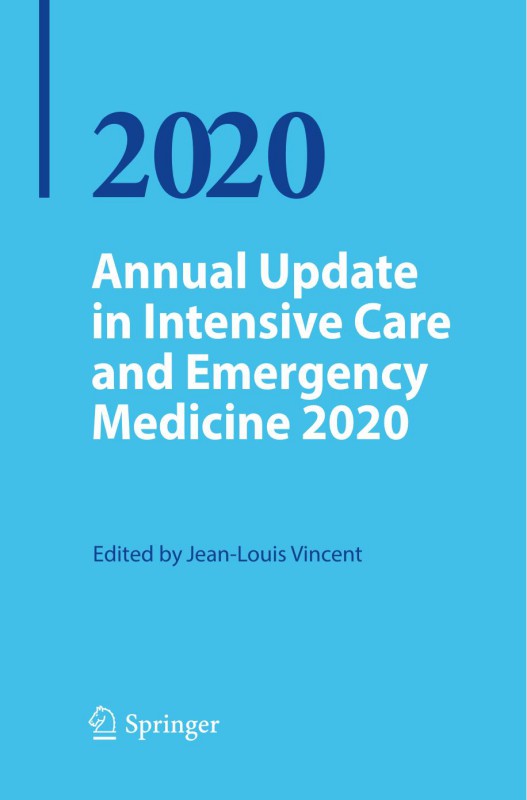
Product details:
ISBN 10: 3030373223
ISBN 13: 978-3030373221
Author: Jean Louis Vincent
The Annual Update compiles reviews of the most recent developments in experimental and clinical intensive care and emergency medicine research and practice in one comprehensive reference book. The chapters are written by well recognized experts in these fields. The book is addressed to everyone involved in internal medicine, anesthesia, surgery, pediatrics, intensive care and emergency medicine.
Annual Update in Intensive Care and Emergency Medicine 2020 1st Table of contents:
Part I. Respiratory Issues
1. Physiology of the Respiratory Drive in ICU Patients: Implications for Diagnosis and Treatment
2. Monitoring Patient Respiratory Effort During Mechanical Ventilation: Lung and Diaphragm-Protective Ventilation
3. Ten Reasons to Use Mechanical Power to Guide Ventilator Settings in Patients Without ARDS
Part II. Acute Respiratory Distress Syndrome
4. Extracellular Vesicles in ARDS: New Insights into Pathogenesis with Novel Clinical Applications
5. ARDS Subphenotypes: Understanding a Heterogeneous Syndrome
6. Assessment of VILI Risk During Spontaneous Breathing and Assisted Mechanical Ventilation
Part III. Biomarkers
7. The Future of ARDS Biomarkers: Where Are the Gaps in Implementation of Precision Medicine?
8. Utility of Inflammatory Biomarkers for Predicting Organ Failure and Outcomes in Cardiac Arrest Patients
9. Troponin Elevations after Cardiac Surgery: Just “Troponitis”?
10. Biomarkers of Sepsis During Continuous Renal Replacement Therapy: Have We Found the Appropriate Biomarker to Use Under This Condition?
Part IV. Fluids
11. Do Intensivists Need to Care About the Revised Starling Principle?
12. Right Ventricular Dysfunction and Fluid Administration in Critically Ill Patients
13. Intravenous Fluids: Do Not Drown in Confusion!
Part V. Hemodynamic Management
14. Update on Right Ventricular Hemodynamic, Echocardiographic and Extra-Cardiac Ultrasound Monitoring
15. Management of Hypotension: Implications for Noncardiac Surgery and Intensive Care
16. Heterogeneity of Cardiovascular Response to Standardized Sepsis Resuscitation
Part VI. The Microcirculation
17. Clinical Relevance of the Endothelial Glycocalyx in Critically Ill Patients
18. Customized Monitoring of the Microcirculation in Patients with a Left Ventricular Assist Device
19. Monitoring of the Sublingual Microcirculation at the Bedside: Yes, It Is Possible and Useful
20. Microcirculation in Patients with Sepsis: From Physiology to Interventions
Part VII. Sepsis
21. Macrophage Activation Syndrome in Sepsis: Does It Exist and How to Recognize It?
22. Is T Cell Exhaustion a Treatable Trait in Sepsis?
23. Cell-Free Hemoglobin: A New Therapeutic Target in Sepsis?
24. Therapeutic Potential of the Gut Microbiota in the Management of Sepsis
Part VIII. Bleeding and Transfusion
25. Blood Transfusion Practice During Extracorporeal Membrane Oxygenation: Rationale and Modern Approaches to Management
26. The Use of Frozen Platelets for the Treatment of Bleeding
27. Viscoelastic Assay-Guided Hemostatic Therapy in Perioperative and Critical Care
28. Extracorporeal Filter and Circuit Patency: A Personalized Approach to Anticoagulation
Part IX. Prehospital Intervention
29. Prehospital Resuscitation with Low Titer O+ Whole Blood by Civilian EMS Teams: Rationale and Evolving Strategies for Use
30. Mobile Stroke Units: Taking the Emergency Room to the Patient
Part X. Trauma
31. Evaluating Quality in Trauma Systems
32. Vasopressors for Post-traumatic Hemorrhagic Shock: Friends or Foe?
33. Extracranial Tsunami After Traumatic Brain Injury
Part XI. Neurological Aspects
34. Ten False Beliefs About Mechanical Ventilation in Patients with Brain Injury
35. Manifestations of Critical Illness Brain Injury
36. Essential Noninvasive Multimodality Neuromonitoring for the Critically Ill Patient
Part XII. Organ Donation
37. Brain Death After Cardiac Arrest: Pathophysiology, Prevalence, and Potential for Organ Donation
38. Organ Recovery Procedure in Donation After Controlled Circulatory Death with Normothermic Regional Perfusion: State of the Art
Part XIII. Oncology
39. Admitting Adult Critically Ill Patients with Hematological Malignancies to the ICU: A Sisyphean Task or Work in Progress?
40. Onco-Nephrology: Acute Kidney Injury in Critically Ill Cancer Patients
Part XIV. Severe Complications
41. A Clinician’s Guide to Management of Intra-abdominal Hypertension and Abdominal Compartment Syndrome in Critically Ill Patients
42. Update on the Management of Iatrogenic Gas Embolism
43. Alcohol Withdrawal Syndrome in the ICU: Preventing Rather than Treating?
Part XV. Prolonged Critical Illness
44. Muscle Dysfunction in Critically Ill Children
45. Respiratory Muscle Rehabilitation in Patients with Prolonged Mechanical Ventilation: A Targeted Approach
46. Post-Intensive Care Syndrome and Chronic Critical Illness: A Tale of Two Syndromes
Part XVI. Organizational and Ethical Aspects
47. Sepsis as Organ and Health System Failure
48. Burnout and Joy in the Profession of Critical Care Medicine
49. Advance Directives in the United Kingdom: Ethical, Legal, and Practical Considerations
Part XVII. Future Aspects
50. Mobile Devices for Hemodynamic Monitoring
51. Artificial Intelligence in the Intensive Care Unit
People also search for Annual Update in Intensive Care and Emergency Medicine 2020 1st :
annual update in intensive care and emergency medicine 2020 pdf
annual update in intensive care and emergency medicine
annual update in intensive care and emergency medicine 2022
annual update in intensive care and emergency medicine 2019
annual update in intensive care and emergency medicine 2021
You may also like…
eBook PDF
Handbook of Critical Intensive Care Medicine 4th edition by Joseph Varon 9783030682705 3030682706

